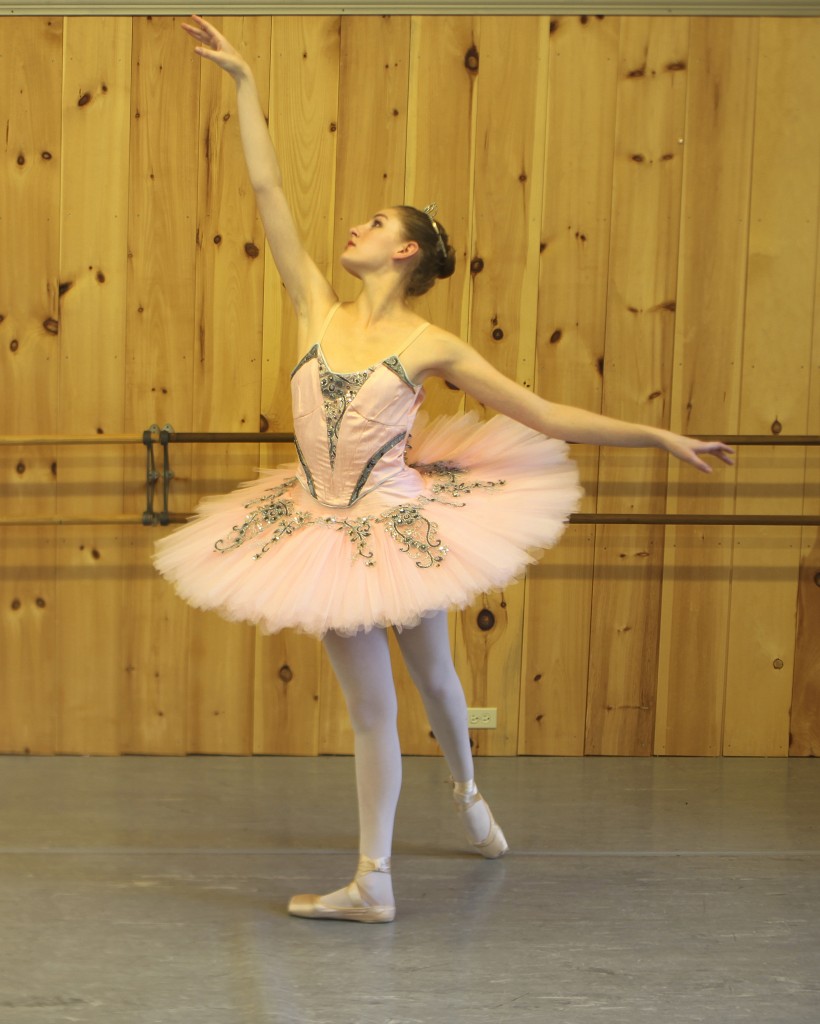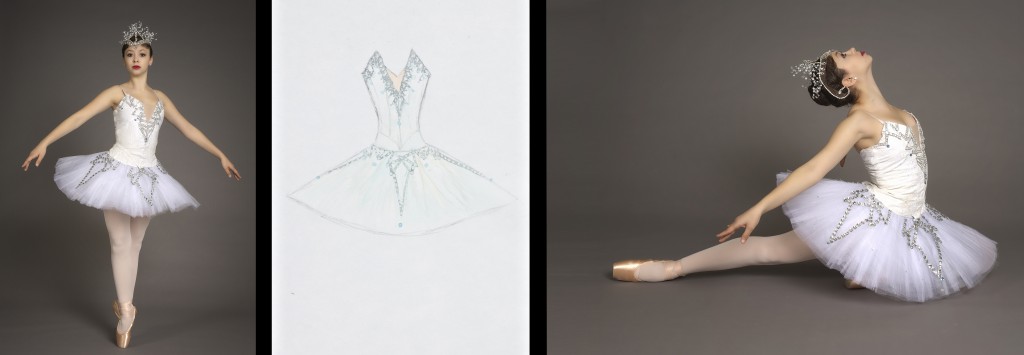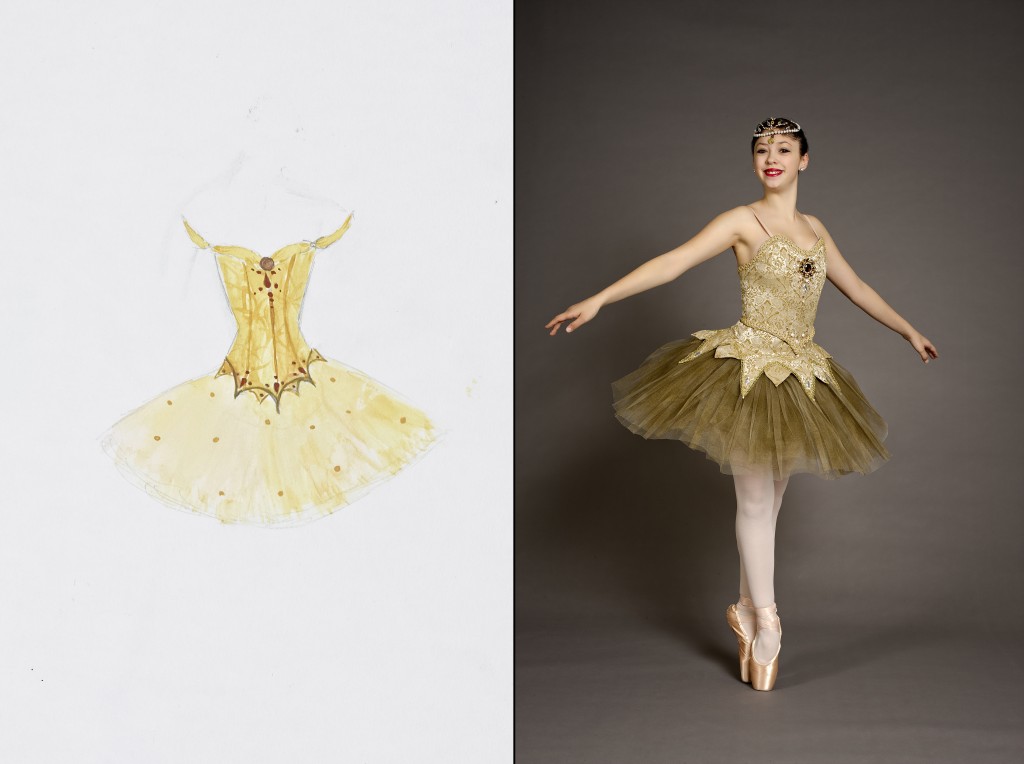
Today we have something really different to share with readers…
Meet Toya Dubin, dancer…and tutu-maker. This teenager is in a class of her own, and knows more about tutus than most!
What is your dance background?
I began dancing at the age of three in my hometown, Miami, Florida at a studio called In Motion. The appeal of graceful movement was irresistible, the idea that I could make myself a fairy or princess even more exciting. I took a modern class there with a disciple of Isadora Duncan, and remember never wanting class to be over. Since then, my love for ballet has outstripped that for any other form of dance. However, I have studied jazz as well as Zena Rommett Floor barre technique. I really enjoy ballet classes with Elena Kunikova, Lisa Lockwood, and Fabrice Herrault at Steps on Broadway. Over the years I have studied Balanchine, Vaganova, Russian, and Checetti styles of ballet, along with some Fosse, and Limón modern dance.
What are you currently doing in dance?
At the moment, I dance with the Orange County Ballet Theatre, under the artistic direction of Alicia Lovely and Carol Purcell, and have performed in their production of The Nutcracker since the age of eight. I also dance with the American Youth Ballet, under the tutelage of Albert Davydov, and performed in their Nutcracker this year. In addition, I study at Ballet Arts Studio, in Beacon, with Alessandra James.
How did your love of costumes come about?
I cannot distinguish a moment in my life in which costumes or being fabulous didn’t hold endless fascination for me. From the moment I learned to undress and redress myself, a minimum of fifteen clothing changes occurred per day. On a hike up Mount Marcy at nine years old I covered my eyelids in glitter and outfitted a friend and myself in fake pearls because, as I told everyone who laughed at us, “A girl must always be fabulous. No matter where.”
This idea has taken root in my mind. Fabulousness to me, is the expression of a person’s innermost aesthetic. In my own life that may involve oodles of rhinestones, but for the characters I bring to life that may not be their breed of fabulousness. The challenge of discovering what brings a different character to life is the ultimate challenge in my opinion, and from ballet I have learned that the most satisfying feeling is to stretch a little further than I thought I could. Succeeding in realizing a character’s personality and expressing that through their clothes is like that perfect triple pirouette you whip off in class one day.
What is it that you hope to do in this arena?
My very first ballet costume was the most spectacular dress I’d ever worn. To my three year old eyes, it was the most beautiful thing I’d ever seen. Made of pale green and lilac tulle with especially itchy but sparkly trim it was the perfect Tinker Bell dress. The joy I felt wearing that first dress is just as potent at seventeen in a tutu as it was at three in an itchy nylon dress. The magic of creating something which can spread the kind of joy I felt in my first tutu is a path to spreading joy to this world. I hope to spread smiles. Lots of them. On stage and on fitting days.
My plans for the future involve applying to college programs that specialize in costume design. I am looking forward to being able to devote 100% of my time to design for the next 4 years. After that, I am considering several options. I have often considered making a company which would sell costumes to ballet studios in a number of sizes, able to fit both the slim dancers and those more curvy. Having spent a decade taking in my costumes, this idea is particularly appealing.
However, I also hope to found a costume shop to serve ballet companies or work with a costume designer at a major company. This summer I attended Tutuschool, a seminar on tutu making spearheaded by Claudia Folts, the founder of Tutu.com, and was awed by the variety of work her company produces. The freedom to work in expensive materials such as raw silk and velvet along with the brilliance of Swarovski jewels is wonderful.

What pieces do you enjoy working on most?
Classical tutus have the same allure for me that classical ballet does. They have a harsh set of guidelines and assorted schools of thought regarding the way they should look, but allow the freedom of color and decoration to shine through. Much as a beautiful penché can be either sensual or heartbreaking, tutus embody a character in a way other costumes can’t. They take a long time to make, and so by the time I finish one, it is not only a costume, but symbolic of an attention to functionality and aesthetic which I find very rewarding.
What are some of the difficulties in preparing costumes for dancers?
One refers to a tutu as having been built. This is very much the case. There are many steel bones which are inserted into various points of the bodice to give it enough structure to withstand the wear and tear it should. The tutu has to be strong enough to be manhandled and sweated in, while at the same time look beautiful and stay in place. Therefore, good fit is essential.
Which leads to the issue of body size. This is one of the most difficult things to handle with costuming. If something has to be let out, a dancer instantly assumes that she’s fat. If I use a medium sized panty pattern for a tutu, the dancers often insist that, regardless of the measurements, “No, my butt is too small to be a medium.” I know. I’m guilty of the same flaw.
The emphasis placed on our bodies as dancers makes costume fittings very difficult in the sense that a costume should make a dancer feel as if the world is her oyster, and that she will be the most beautiful thing on the stage. But if she feels as though she looks like an opera singer rather than the graceful wisp of a dancer she really is, she is bound to have a worse performance. The psychological aspect of the warm body that’s being fitted is as important as the fit of the costume. And to make matters worse, each dancer is different, so each personality in the fitting room and approach are tailored to that dancer’s own doubts.
Briefly, what is the process of constructing a tutu like, and how long does it take?
It takes about 15 to 17 yards of very stiff tulle called Balanchine Net to make the tutu skirt. These are cut into strips which are 54 inches wide and are hand pleated and then machine sewn to a panty made of a strong but stretchy material called Powernet. An average of eight 54” widths are attached to each of the ten layers of net sewn to the panty.
Elastic is threaded through fabric casings to make the leg holes of the panty stay tight to the dancer, and a wide piece of fabric is cut and made to the dancer’s measurements (called the basque) which is attached to the top of the skirt. It is topped with elastic or grosgrain ribbon to close at the dancer’s waist. The netting is sewn to the panty in ten layers, each one with a progressively smaller circumference as the layers go down. The top layers can be anywhere from 17 to 12 inches typically and the last row is usually about three.
Bodices depend entirely on the pattern from which they are made, but to speak generally often have eight to thirty pattern pieces which are sewn together. This is then boned using pieces of steel which look like Slinkies that have been steamrollered. The bones go into special casings which are often sewn onto the seams of a bodice. Then the decoration begins.
The pleating alone for the skirt, when done by a method called “double hand pleating” takes about 17 hours. The construction of the tutu onto the panty usually takes another two or three, and steaming and tacking take about four hours together. The bodice takes longer, in part because it is much more difficult to fit, and often because a version made of muslin is made before the one of the real fabric for fitting purposes. Decorating takes anywhere from ten to fifty hours, depending on the design and intricacy of the role. For example, tutus made for partnering cannot have rhinestones which are fastened using prong settings, each gem must be sewn on by hand. To boil it down, a tutu is upwards of 60 hours of work, depending on the intricacy of the design.

What types of material do you enjoy working with most?
When I bone on the outside of a pattern piece for the lining, particularly on the bodice, instead of using canvas casings for the bones, I prefer to use colorful satin ribbons in a contrasting color to that of the tutu. One of my favorite combinations is in a red and black tutu with aqua blue bone casings in the inside. I enjoy putting the contrasting color in as a surprise for the dancer, and when I’ve worn tutus in which the boning is different, it feels as though the costume and I share a secret the audience isn’t in on, which makes me feel more confident. It is my hope that the dancers who I costume also feel connected to the costumes they wear.
But beyond these small details, in all honesty, I can’t say I really have any serious preferences in fabrics. I have worked mostly in non stretch materials, and have grown to love canvas and brocade, but the feel of velvet is lush in a way brocades can’t compare. And silk is another whole animal too, in that struggling with the way it shrinks when heated has taught me some serious lessons in patience, but it looks so beautiful it’s hard to resist its charms. I love working with new things, expanding my knowledge and learning more about each thing I touch as I figure it out.
What do you think people might be surprised to learn about costuming for ballet?
As an art, costuming and the couture industry is dying. Many fabric shops have closed down and the price of the fabrics and trims available has increased because of the increased dependence on manufactured costumes. Home sewing is less and less fashionable, and as a result, fewer people are interested in the process of building costumes, but there still are a few serious costume shops in New York City and elsewhere who keep the flame burning.
What is next for you?
I am applying to schools which offer costume design majors, but will remain a dancer as well. My inspiration is often found in ballet class, and the idea of leaving behind an art form which I have so thoroughly enjoyed is heartbreaking. So I’m opting to stay in class, grow old at the barre, and do my plies at least once a week.
I want to make sparkly things and to live my life with the knowledge that I am giving back to a community of dancers the best way I know how. By making them even more beautiful, and empowering them to share their innate grace with the audience. By allowing the sparkly things I create to make people happy.





Toya, thank you so much for this lesson in tutus! While most of know and appreciate the hard work that goes into designing them, we don’t necessarily know the specifics of how each one is “built.” I loved learning more about tutus and about your background. The designs on this page are beautiful! I love your approach to your work and your philosophy. Good luck!
~leigh
Thanks, as always, for the comment Leigh! I was really interested to hear what Toya had to say….it’s something I think many of us don’t know–all the hours of labor that go into a design. I’m sure we will see Toya’s work again and again in the future! 🙂
Lovely, she has a brilliant career ahead of her, for sure!
I’ve found that the best way to deal with people not liking the numbers or size associated with the garment you are trying to fit is to *not tell them*. Just leave it out. If you are taking measurements, take them from behind, write them down on a piece of paper, and keep on talking to her about the weather or the something.
Very smart move! I like it! 🙂